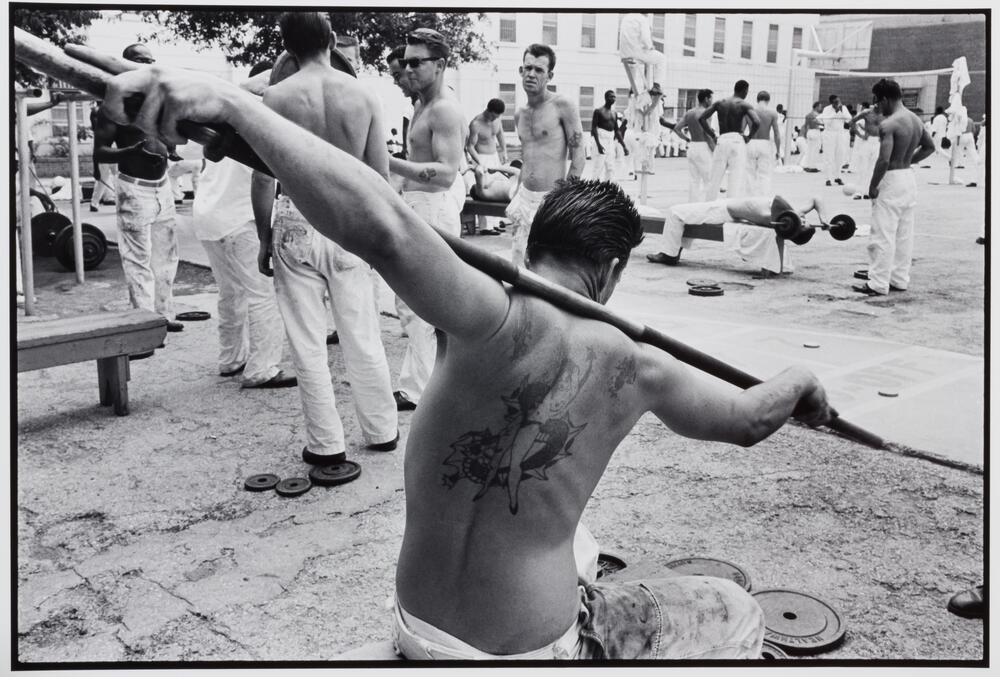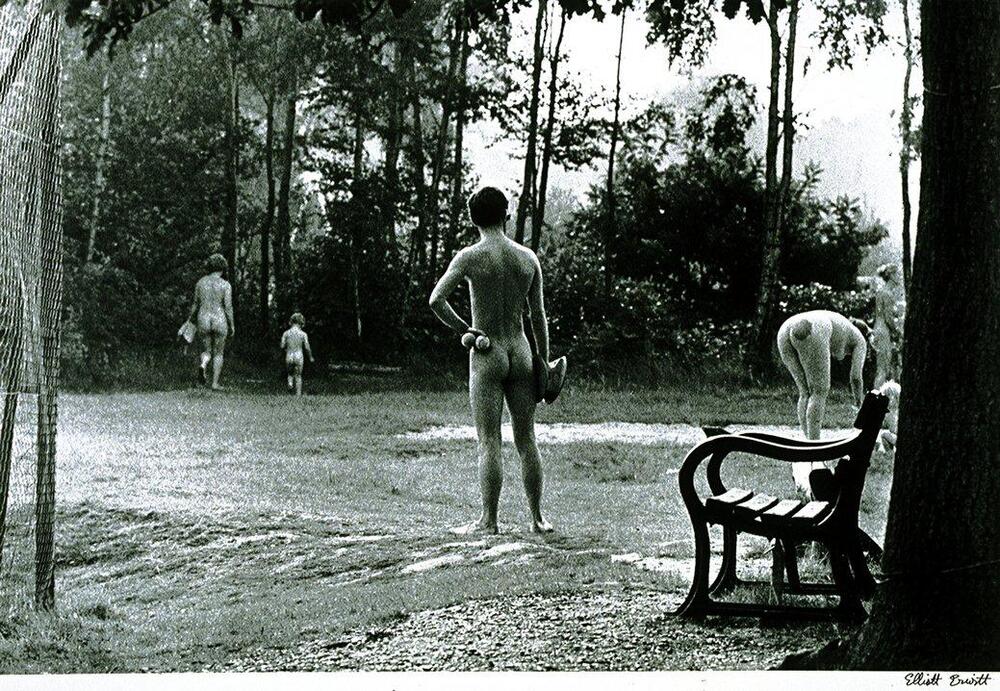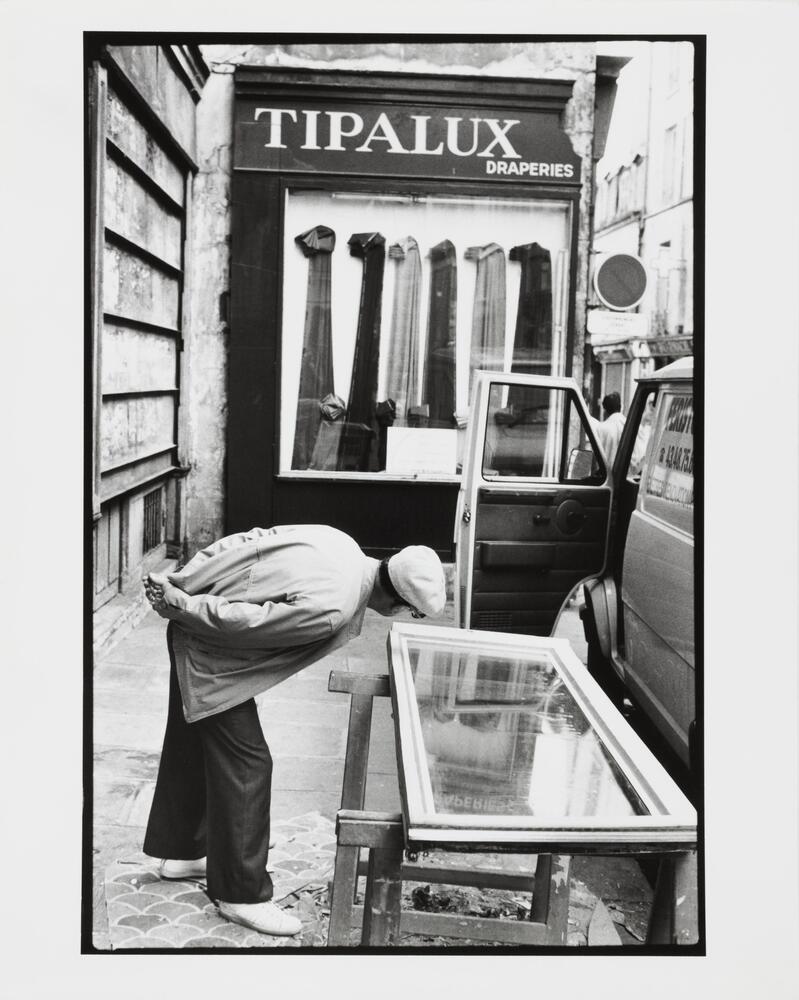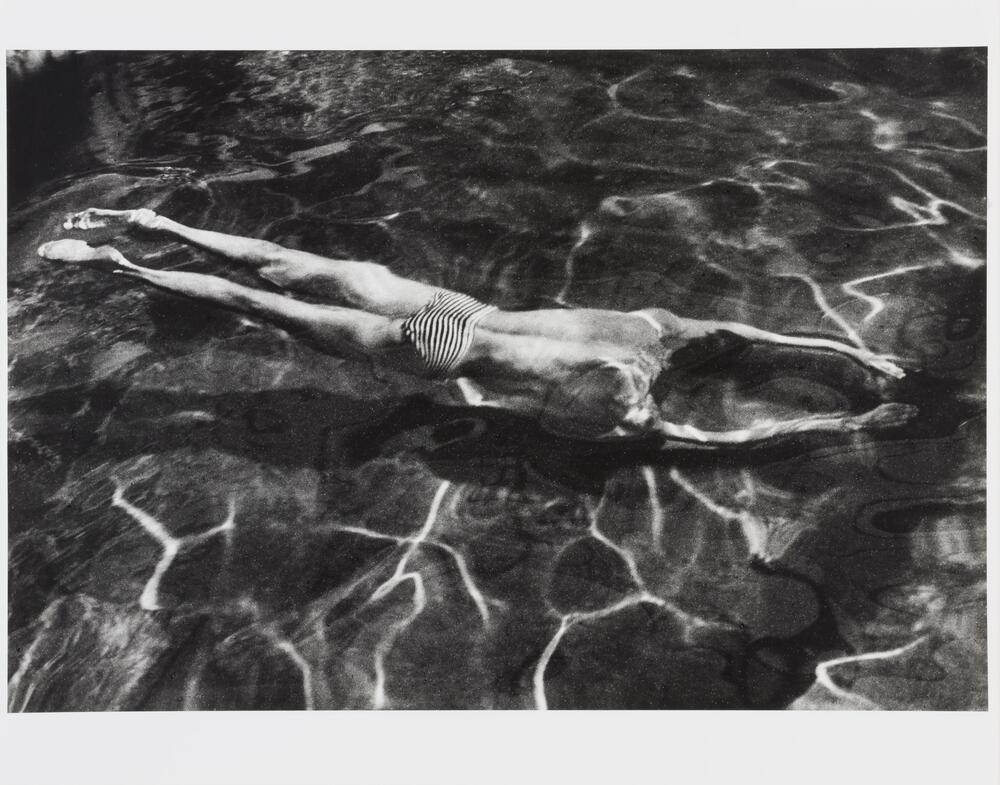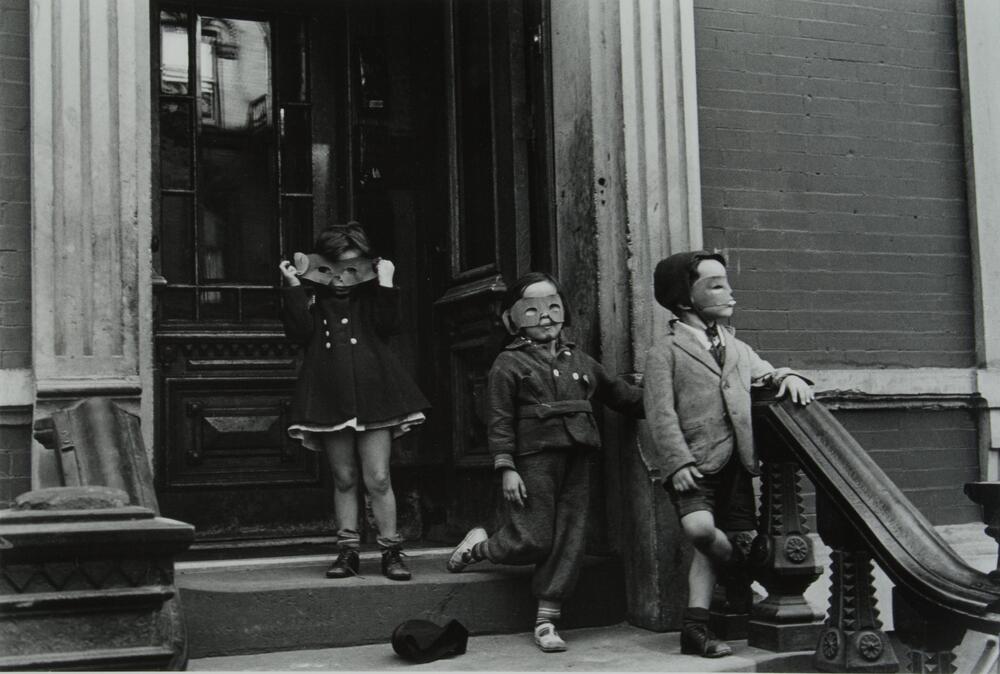Facial Recognition Failed
by Keaira Hardge
Danny Lyon was born in Queens, New York to his German-Russian Jewish parents. The Yard by Danny Lyon is an image from his collection "Conversations with the Dead" where he spent time in a prison in Texas taking photographs of the men there and he got the chance to get to know them and their stories. What I find interesting about this image is the way it focuses on the activity and the physique of the inmate. Not capturing the face of this person allows viewers to primarily focus on those aspects. Also, Lyon allowed the image to contain other inmates working out as well. This takes away complete individuality from the main subject of the image because it shows he isn't the only person working for this physique, but his back tattoo affords him the opportunity to stand out in some way. The tattoo is of a naked woman with a dragon around her, this could also show his fascination with the outward appearance of people.
Elliot Erwitt was born in Paris to a Russian-Jewish family, when his family moved to America his interest in photography began in Hollywood as a teenager. This image by Erwitt is a compelling addition to my collection because it does hide the faces of those being photographed but it shows the full nudity of every person in the image. The voyeuristic nature of this photo is very apparent but it is unclear if the subjects truly don't know they are being photographed. Having their backs(ide) to the camera is what gives the audience the idea that this is an act of voyeurism, in both the artistic and the sexual definition. Not only of the photographer but also of the people who are in the image. They all are clearly exhibitionists, willing to show their bodies, but there is also a voyeuristic aspect for them each because they are okay with seeing others naked. Erwitt not capturing the faces of the subjects allowed them to keep some shred of their dignity.
Leonard Freed was born in Brooklyn, New York to a Jewish working-class family. He is known primarily for his photojournalistic work in the civil rights movement. Man examining window by Leonard Freed got my attention because even with all of the reflective surfaces in the image the man's face is not visible. He leans incredibly close to the window and yet there is no trace of him. I believe that this was done to allow the viewer to notice all of the elements of the image. In the window, you can see the reflection of the store that is selling drapes. The man's position under the drapes creates a cycle of looking at the man, then the window, and back up to the drapes. Rather than seeing the man as a subject of the photo, he becomes just another static object in the image.
André Kertész was a Jew born in Hungary; he was a part of a middle-class family. Kertész was interested in both modernist and surrealist ideas when it came to photography and Underwater Swimmer is one example of that. This image seems as if it was created as a painting or in photoshop but Kertész utilizes the way the sun hits the water and makes this beautiful effect. Then he captures the movement of the man within the water at this angle where the water seems like gelatin and the swimmer is an item stuck inside. Not showing the face of the swimmer is what I believe adds to the unreal effect of this image, it allows the viewer to focus on how the water and light change the shape of the body underneath it.
Helen Levitt was a Jewish woman born and raised in Brooklyn, New York. She was one of the first people to begin to develop the street photography style. Her first solo exhibit was called Photographs of Children, which is where this photo Untitled was shown. She took these photographs with a right-angle lens that allowed her to not look like she was taking photos due to not having to look into the camera. So this tells the audience that these children are not aware that they have a photograph being taken of them. In my opinion, this creates a creepy aura to it not only because of the terrifying masks but also because there is no telling what they are going to get into. Children are naturally mischievous and having masks to protect their identity only motivates them to be worse. The innocence that is assigned to them begins to fade away especially with the absence of adults in this image as well.
3 Comments
— by Tanya Alexandra Silverman (December 5 2022 @ 9:59 am)
— by Ava Victoria Seaman (December 6 2022 @ 5:05 pm)
— by Charles Henry Gertner (December 13 2022 @ 10:09 pm)
0 Tags & 0 Keywords
Tags
Created For
K-12 EducatorK-12 Student
Museum Visitor
UMMA Docent
UMMA Staff
University Faculty
University Student
Rate this Resource
AVG: 0 | Ratings: 0
& Author Notes
All Rights ReservedLast Updated
December 5, 2022 10:12 a.m.Report
Reporting Policy
